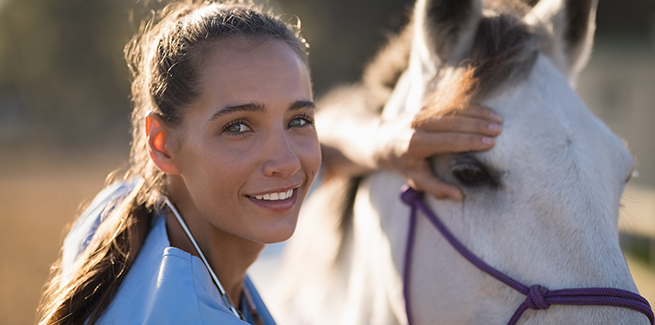New Texas vet school working with AAHA hospitals to train students

When the new Texas Tech University School of Veterinary Medicine (TTU SVM) held its first-ever day of class earlier this week, the first lecture was for a course called DVM 5380–Parasitology.
According to the description in the course catalog, students will gain an “understanding of the epidemiology, host-parasite interaction, and clinical diseases of North American parasites, particularly those in Texas and the surrounding regions [Emphasis added].”
In those italics lies a hint to the new school’s mission: to produce veterinarians who will, upon graduation, serve rural and regional areas, especially in Texas, where a lack of veterinarians has been a long-standing problem.
In order to fulfill that mission, the school needs to provide students with a cost-effective education that doesn't leave them saddled with crippling student debt.
TTU SVM’s solution: Eliminate the need for—and expense of—building a teaching hospital by having fourth-year students learn directly from veterinary practices in rural areas throughout the state that have partnered with the school in a residency-like learning program.
That includes several AAHA hospitals.
Guy Loneragan, BVSc, PhD, dean of TTU SVM and a professor of epidemiology and public health at the school, developed much of the curriculum, which he called a community-based approach to clinical experiential learning, developed and honed over decades in human medical education.
“This community-based approach has now been used for 15 years or so in veterinary medical education, and has proved itself as second to none in providing hands-on opportunities in real-world settings,” Loneragan told NEWStat.
Loneragan said the school’s focus is squarely on general veterinary practice in rural and regional communities: “We’re thrilled that so many outstanding practices, including many AAHA members, have stepped forward [to provide] our students with high-quality, hands-on learning opportunities.”
Among the many advantages of the community-based approach, said Lonergan: diversity and number of primary-care cases, hands-on training and experience in the kinds of rural practice in which the school hopes the students will one day choose to practice, and “being proactively engaged with the veterinary profession in the educational process.”
This also leads to huge savings for the school, which translates to a much more affordable education for the students.
To help prepare the students to get the most out of their community-based clinical year, Lonergan said he developed the curriculum based in part on the AAVMC’s Competency-Based Veterinary Education framework: “Our curriculum reduces the time students spend in seats in the classroom, and dramatically increases the time they’re working on clinical and professional competencies.”
It’s an approach Loneragan believes help solve the veterinary education and veterinary services needs for underserved communities of rural and regional Texas, and he’s enthusiastic about the prospect.
“We couldn’t be more excited to have started delivering the curriculum to our inaugural class of 64 students this week,” he said.
Photo credit: © Wavebreakmedia/iStock/Getty Images Plus via Getty Images



